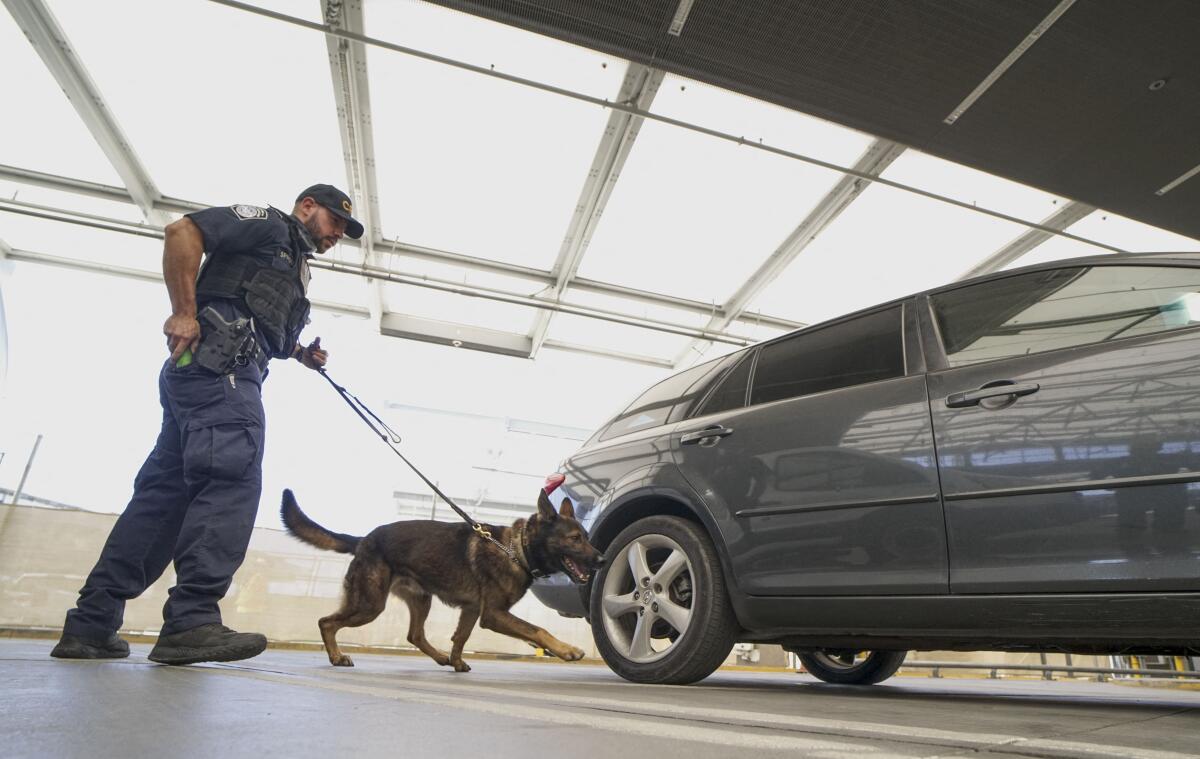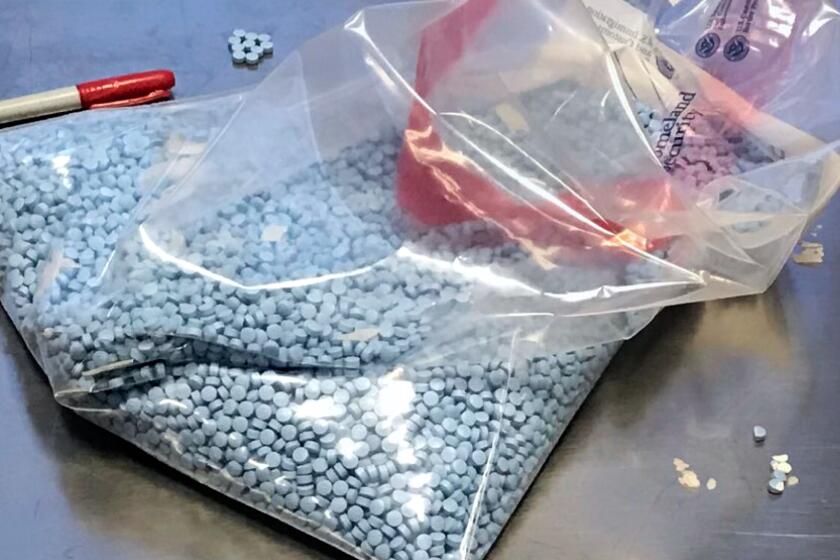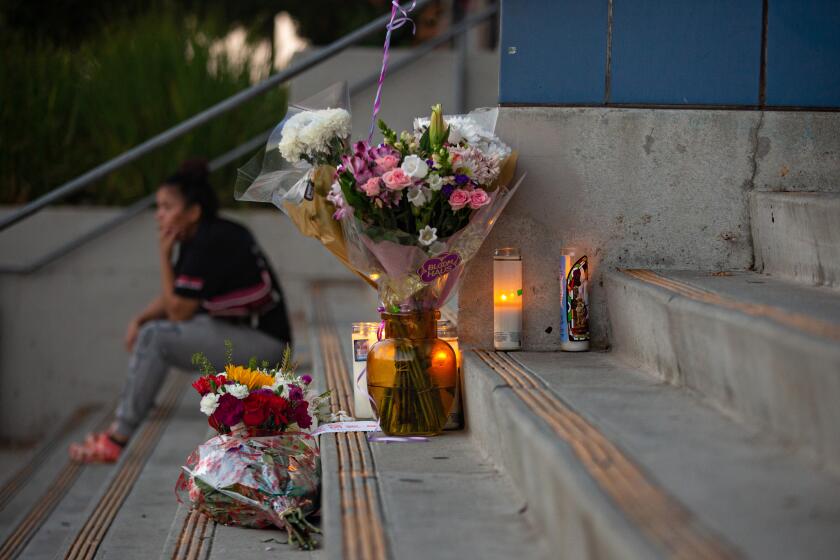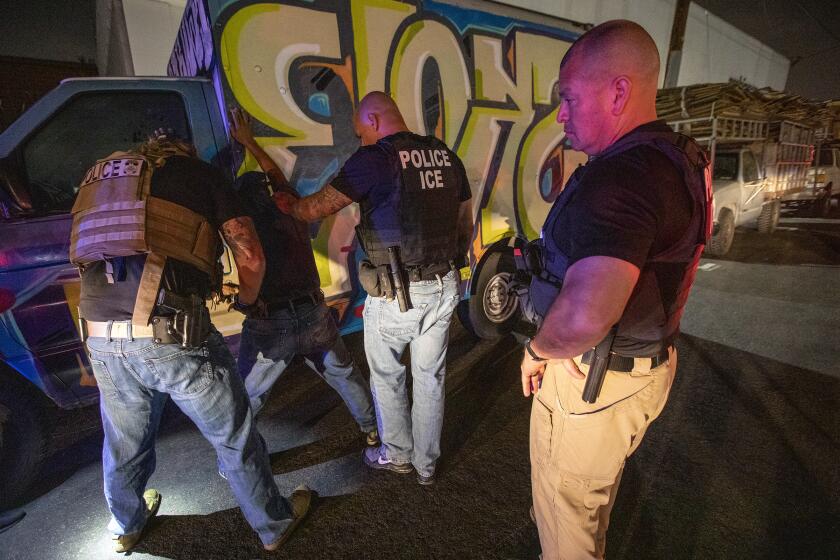Baja California trafficking ring moved meth, fentanyl, cocaine throughout U.S., prosecutors say

- Share via
SAN DIEGO — A San Diego mother of three was sentenced this week to nearly six years in federal prison for her role in a Baja California-based drug trafficking ring operated by her brother that a judge estimated has likely brought “thousands of pounds of drugs” into the United States.
Her sentencing, and several other recent plea agreements and sentencings, stems from a 14-count indictment handed down by a federal grand jury in May that charges 17 people with conspiring to distribute cocaine, fentanyl, heroin and methamphetamine. The woman sentenced Monday, Angela Diana Guerrero, pleaded guilty to that charge and one count of money laundering, while several other members of the alleged conspiracy faced charges of importing drugs or possession of drugs with intent to distribute.
As of Wednesday, the leader of the trafficking ring remained at large. Though his name remains sealed on the indictment, court records and courtroom testimony identified him as Israel Guerrero, the brother of the woman sentenced Monday. The name of another top defendant in the case also remains sealed, and that person remains at large.
Prosecutors said the indictment was the result of a federal task force investigation dubbed “Operation Big Mouth” that resulted in the seizure of more than 340 pounds of methamphetamine, 130 pounds of cocaine, 23 pounds of fentanyl and 6 pounds of heroin. Federal agents also seized at least 13 firearms and $55,000 tied to the trafficking ring, according to court records.
U.S. District Judge Gonzalo Curiel said Monday that those figures represented only “what we know” but that it’s likely the group had previously brought “thousands of pounds of drugs into the United States.”
In the last two months, agents with Homeland Security Investigations have seized as much fentanyl as they did in all of 2019, federal officials said.
Assistant U.S. Atty. Ryan Sausedo declined to say Wednesday whether the group had any ties to Mexican cartels but said it “clearly had substantial sources of supply in order to obtain the quantities [of drugs] they were bringing into the country.”
Sausedo said federal agents began investigating the group in July 2021 and by May had made dozens of seizures of drugs, typically totaling 45 to 90 pounds. Sausedo told a judge during a detention hearing for one of the defendants that the group moved the drugs across the border in buckets purporting to contain construction material such as drywall mud.
According to a sentencing memorandum for one of the defendants, those drugs were then moved to cities across California, as well as Arizona, Colorado, Illinois, Nevada, Oregon, Tennessee, Utah and Wyoming.
An attorney for Angela Guerrero declined to comment on her client’s behalf due to portions of the case remaining sealed, but in sentencing documents and in court, the attorney said her client’s brother was the one who got her involved with the group.
Fentanyl deaths among teens more than doubled from 2019 to 2020, increasing from 253 to 680. Last year, the number jumped to 884, according to a report from the Journal of the American Medical Assn.
Curiel sentenced another defendant, Elizabeth Allison Edelman, to 13 years in prison. Sausedo said Edelman received the longer sentence because she was not only smuggling drugs across the border but also running her own distribution network in the San Francisco Bay Area.
The highest-ranking defendant who has so far been taken into custody, Danny Lamar Miller-Kidd, is set to plead guilty next week. His role in the trafficking organization remains unclear based on the records that are public in the case.
Court records show Miller-Kidd, who lives in Nevada, was released in August after his initial arrest. But he was re-arrested in October and has remained in custody since, after Las Vegas police stopped him on a traffic violation and searched his black Cadillac STS luxury sedan.
Inside the vehicle they allegedly found a short-barreled rifle with no serial number, numerous high-capacity magazines including drum-style magazines, body armor and several gun parts typically used to make ghost guns.
More to Read
Sign up for Essential California
The most important California stories and recommendations in your inbox every morning.
You may occasionally receive promotional content from the Los Angeles Times.













